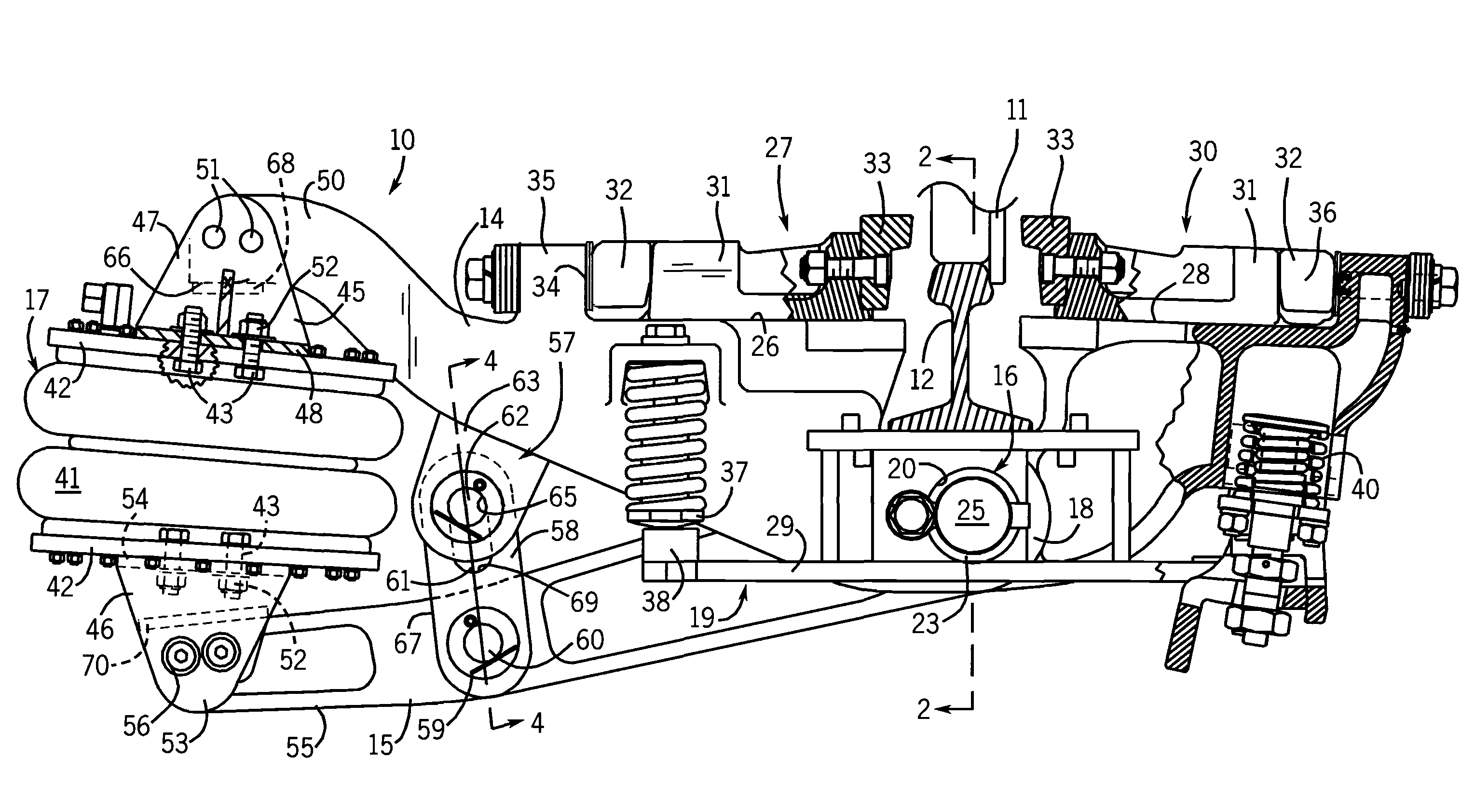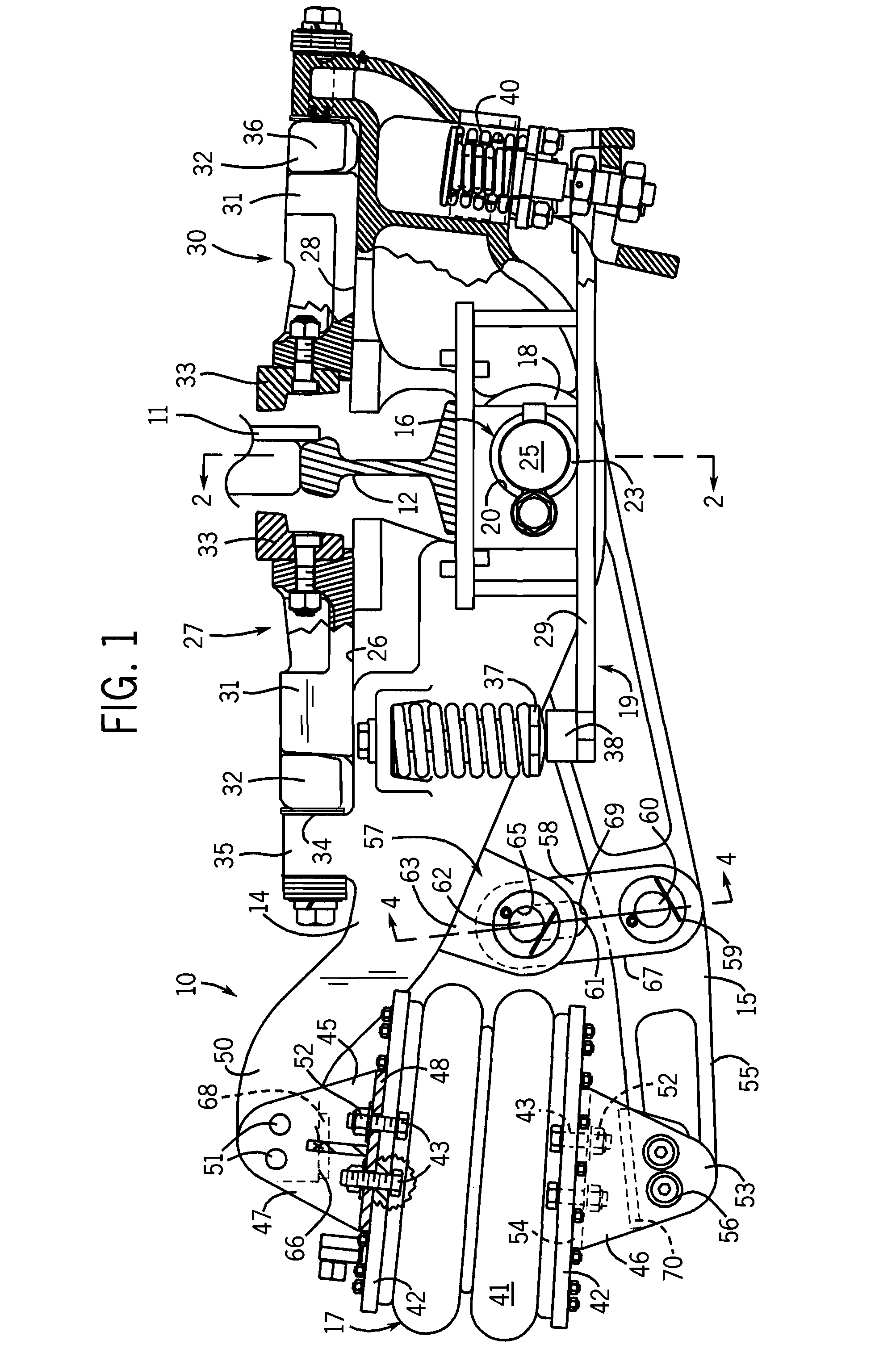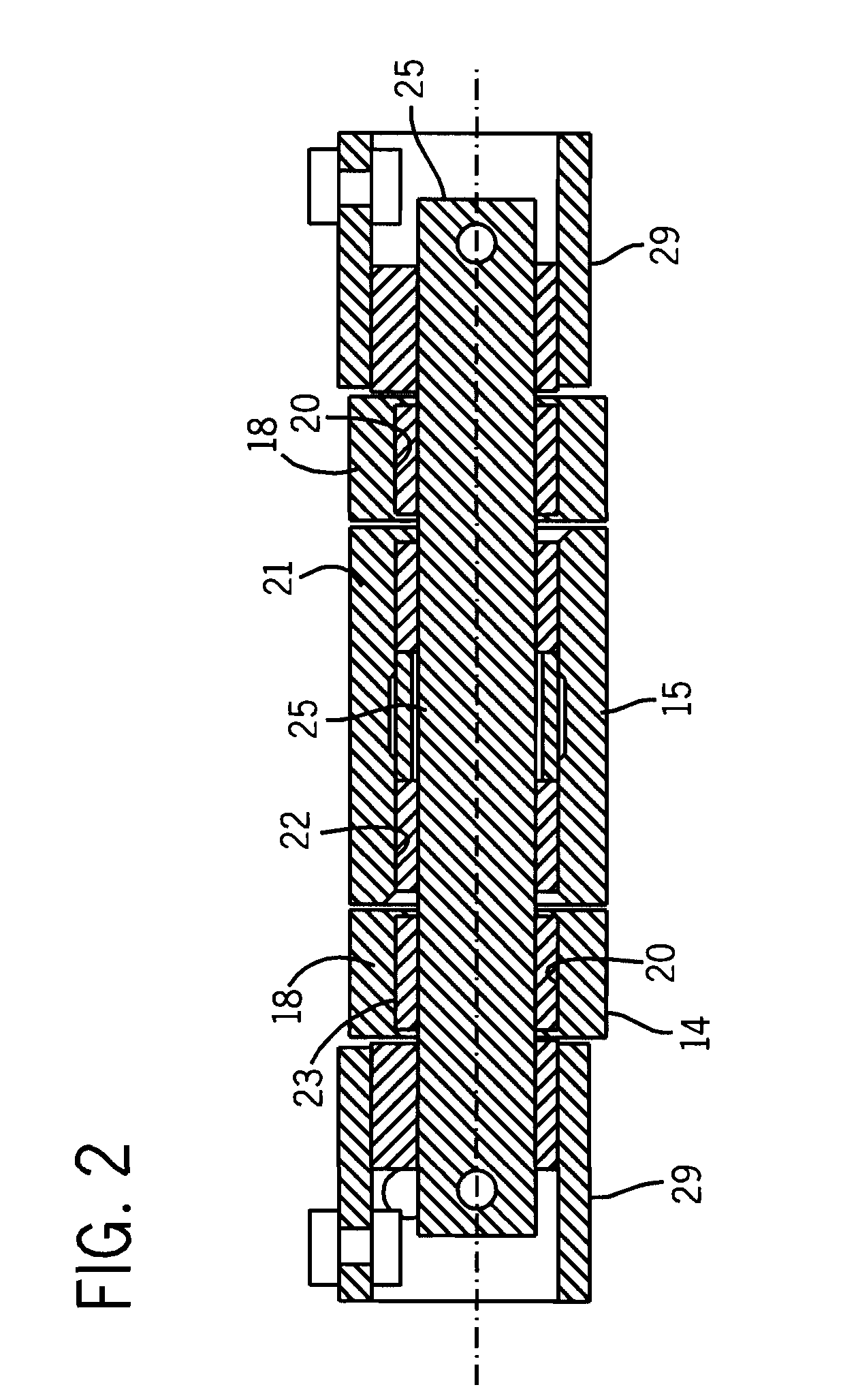Bladder-actuated railroad retarder
a retarder and bladder technology, applied in mechanical equipment, railway auxilary equipment, transportation and packaging, etc., can solve the problems of reducing maintenance, reducing maintenance, and evaluating fulcrum bearing wear, so as to achieve balanced lateral deflection of the bladder member. , the effect of minimizing the deflection
- Summary
- Abstract
- Description
- Claims
- Application Information
AI Technical Summary
Benefits of technology
Problems solved by technology
Method used
Image
Examples
Embodiment Construction
[0027]Referring initially to FIGS. 1 and 7, a pneumatic retarder 10 of the present invention is used to control the speed of a moving car in a marshalling yard by engaging opposite faces of a car wheel 11 as it rolls on a rail 12 through the retarder. The retarder 10 is positioned between adjacent ties and extends beneath the rail 12 from an outer field side of the rail to an inner cage side between the rails 12 (only one of which is shown in the drawings). A support structure 19 for the retarder includes substantially identical supports 29 carried by the ties and positioned in opposite sides of the retarder.
[0028]The retarder 10 has an upper lever arm 14 and a lower lever arm 15 which are pivotally connected with a fulcrum pin assembly 16 positioned directly beneath the rail 12. On the field side of the retarder, the lever arms 14 and 15 have opposed ends to each of which is attached an end of an air bladder actuator 17. The fulcrum end of the upper lever arm 14 has a bifurcated co...
PUM
 Login to View More
Login to View More Abstract
Description
Claims
Application Information
 Login to View More
Login to View More - R&D
- Intellectual Property
- Life Sciences
- Materials
- Tech Scout
- Unparalleled Data Quality
- Higher Quality Content
- 60% Fewer Hallucinations
Browse by: Latest US Patents, China's latest patents, Technical Efficacy Thesaurus, Application Domain, Technology Topic, Popular Technical Reports.
© 2025 PatSnap. All rights reserved.Legal|Privacy policy|Modern Slavery Act Transparency Statement|Sitemap|About US| Contact US: help@patsnap.com



